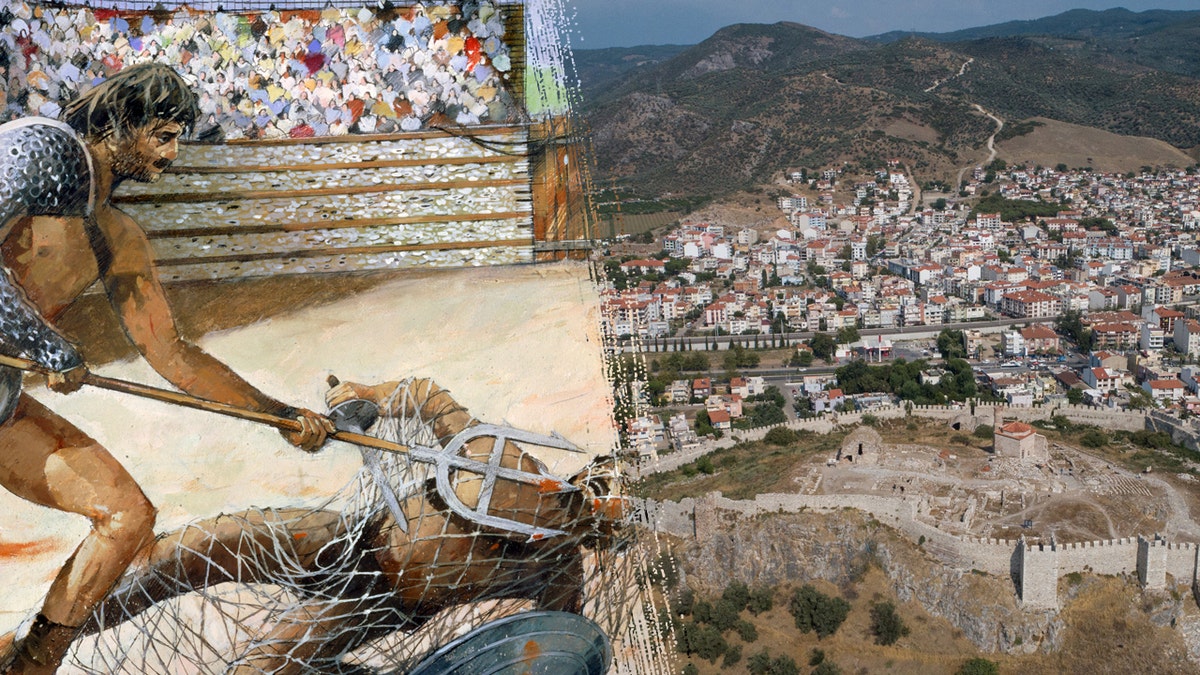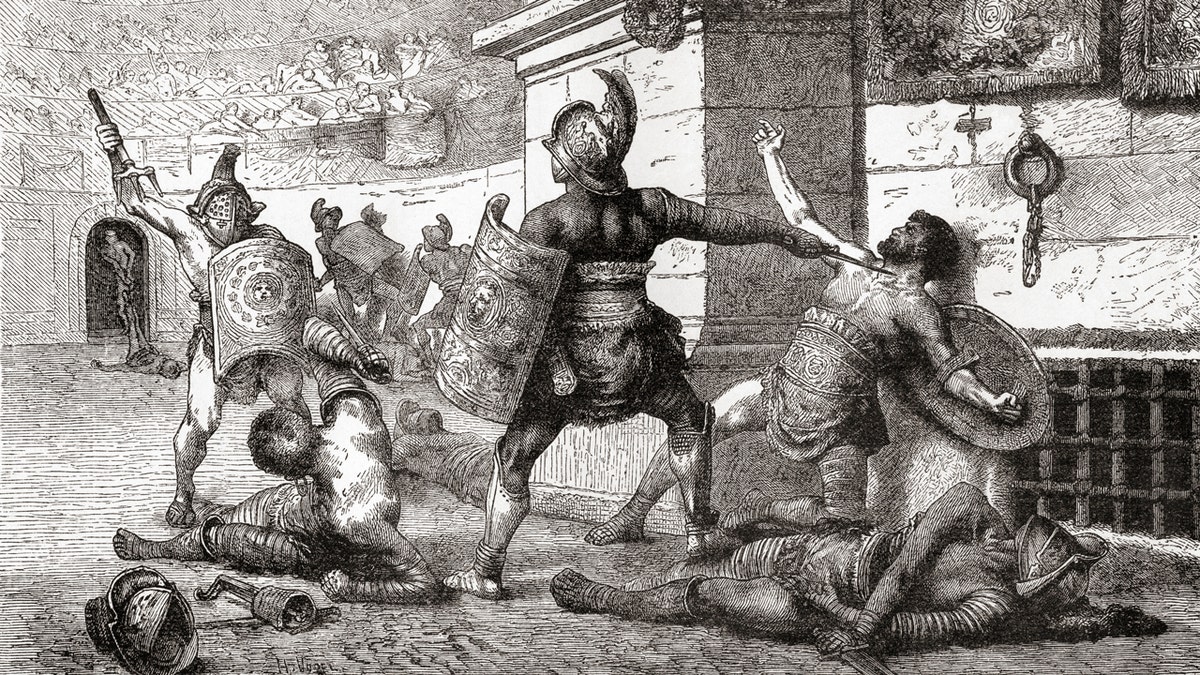Archaeologist at Revolutionary War site stresses importance of 'our collective past' at Colonial Williamsburg
Dr. Jack Gary, Executive Director of Archaeology at the Colonial Williamsburg Foundation, shares about the newly discovered Revolutionary War barracks on-site.
In Turkey, a team of archaeologists discovered the tomb of a Roman gladiator dating back to the third century B.C., with the remains of 12 individuals inside.
The tomb was unearthed during the excavation of St. John Monument in Selcuk, Izmir, Turkey, according to Türkiye Today. The excavation was authorized by the Ministry of Culture and Tourism and led by associate professor Sinan Mimaroglu from Hatay Mustafa Kemal University’s Department of Art History, according to the source.
While the tomb was from the third century B.C., it was determined that it was later reused during the fifth century A.D., to hold the remains of the 12 men and women, Türkiye Today reported.

A tomb belonging to a Roman gladiator, which was much later used again for the remains of 12 individuals, was unearthed by archaeologists in Turkey. (English Heritage/Heritage Images/Getty Images I Mahmut Serdar Alakus/Anadolu Agency/Getty Images)
THE HISTORY OF THE HOXNE HOARD, THE LARGEST COLLECTION OF ROMAN TREASURE FOUND IN BRITAIN
The Roman gladiator buried in the tomb was named Euphrates, per the source. In ancient Roman times, gladiators were professional fighters who engaged in battle in front of crowded arenas.
Many early gladiators were enslaved peoples and those who committed crimes, though that wasn't always the case, History.com reported. With the growing popularity of these battles, men began to voluntarily sign up to participate, according to the source.
Gladiators would typically engage in one on one combat, under the monitoring of a referee, according to The Colosseum's website. While early battles were often fought to the death, this less commonly became the case as the games continued, and as fighters underwent intense and expensive training and were costly to replace, according to the source.

Roman gladiators fought bloody battles in arenas full of spectators. (Universal History Archive/Universal Images Group via Getty Images)
THE 4,000 ITEMS IN THE STAFFORDSHIRE HOARD MAKE IT THE LARGEST COLLECTION IN HISTORY OF ITS KIND
Historians estimate that around one in five or one in 10 battles ended in the death of one combatant, according to History.com. Many gladiators only lived to their mid-20s, per the source.
Tombs similar to the one belonging to Euphrates have been found in Istanbul, Marmara Island and Syria, according to Türkiye Today.
Inside the tomb recently unearthed by archaeologists, there were crosses carved within, dating back to the fifth century, as well as on the lid, which are thought to have been added during the seventh and eighth centuries, according to the source.

The tomb was found at St. John Monument in Selcuk, Izmir, Turkey. (Mahmut Serdar Alakus/Anadolu Agency/Getty Images)
CLICK HERE TO GET THE FOX NEWS APP
Not much is known about the 12 who were buried inside the tomb, but it's believed they came from an upper-class background.
"The burials inside the church likely belong to the upper class or clergy, as it’s unlikely an ordinary person would be buried in such a meticulous manner within a church," Mimaroglu said, per Türkiye Today.
The finding of this tomb holds significance in many different ways, including giving researchers more knowledge of the ancient city of Ephesus as well as ancient burial practices, the source notes.

